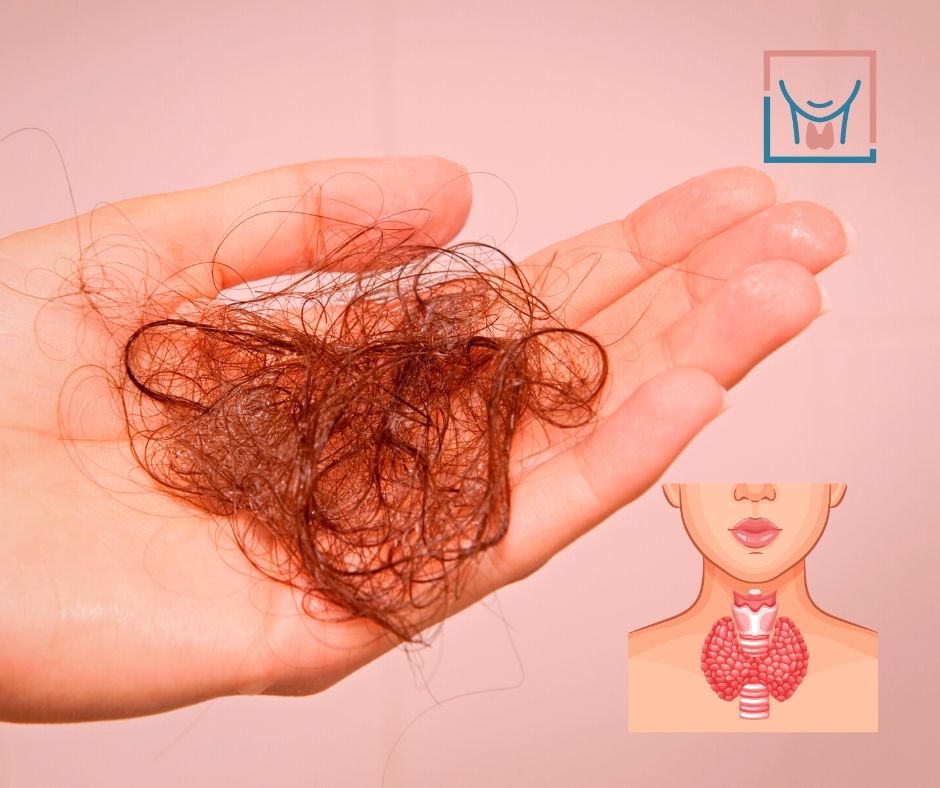Alzheimer’s disease is a devastating neurodegenerative disorder that is eventually fatal. According to the CDC, Alzheimer’s is the 6th leading cause of death in the U.S. Although there are some natural treatments, preventing cognitive decline is key.
Alzheimer’s is characterized by the presence of amyloid-beta plaques and neurofibrillary tangles in brain cells (or neurons). Over time, the plaques and tangles keep neurons from functioning properly. This eventually kills the neurons, leading to more severe symptoms.
Recent studies have pointed to a different cause of Alzheimer’s: inflammation in the brain, or neuroinflammation. The plaques and tangles in neurons can cause inflammation, but other sources of inflammation in the rest of the body can travel to and affect the brain as well.
Controlling inflammation has shown considerable promise as a treatment for dementia and Alzheimer’s.
Gum and periodontal disease are one of the major preventable causes of inflammation in the body. Controlling inflammation in the mouth and gums can help prevent many diseases, including cardiovascular disease and potentially even Alzheimer’s.
Want to prevent it using a plan that works… without breaking the bank? Get our guide to the Bredesen Protocol on a budget for $29
What Is Gingivitis?
Gingivitis is a type of gum disease characterized by inflammation of the gums. Gingivitis is caused by plaque buildup on the teeth around the gums. Plaque is a biofilm created by oral bacteria that allows them to stick to the teeth and gums and helps protect them as they grow.
If it’s not removed, plaque irritates the gum tissue, leading to inflammation. Over time, gingivitis can develop into more severe periodontal disease or periodontitis, which can cause tooth loss and bone loss in the jaw.
Most gingivitis is caused by a bacterium called Porphyromonas gingivalis. P. gingivalis produces a class of enzymes called gingipains which create inflammation, help them to colonize the gums, and allow them to evade the immune system’s response.
Gum Disease: Definition And Complications
Gum disease is a term that encompasses all inflammation and damage to the gums that is caused by harmful bacteria in the mouth. Gum disease ranges from mild gingivitis to advanced periodontal disease that leads to tooth and bone loss.
What are the signs and symptoms of gingivitis? The signs and symptoms of gingivitis are sore gums, redness along the gumline, and small amounts of blood in your mouth after flossing. If left untreated, gingivitis can develop into gum disease.
What are some of the symptoms of gum disease? Some of the symptoms of gum disease are:
- Bad breath
- Red or purplish gums
- Swollen gums
- Irritated gums that are tender to the touch
- Bleeding after flossing
- Pink on your toothbrush after brushing
- Receding gums
- Toothache
- Mouth sores
Can gingivitis cause Alzheimer’s? Gingivitis may be a causal factor for Alzheimer’s, according to a growing body of scientific evidence. Inflammation caused by gingivitis and periodontal disease can trigger inflammation in the brain that leads to Alzheimer’s. This research is still emerging, though.
Bacteria In The Brain: The Evidence
Several species of bacteria have been implicated in the development of Alzheimer’s. Bacteria growing along the gumline stimulate an immune response, causing the inflammation of gum disease.
Pro-inflammatory molecules travel from the gums to the brain either via the blood or nerve cells, where they cause more inflammation. Over time, this inflammation can damage neurons and potentially cause the brain changes we see in Alzheimer’s disease.
A new study from 2019 in the journal Science Advances showed that P. gingivalis, the bacterium that’s a major cause of gum disease, is also linked to Alzheimer’s.
The DNA of P. gingivalis is present in the brain tissue and spinal fluid of patients with Alzheimer’s. Brains of people both with and without Alzheimer’s had been affected by gingipains. This demonstrates that both bacteria and gingipains can cross the blood-brain barrier.
The new research also showed that P. gingivalis infection happens before symptoms of Alzheimer’s appear, suggesting that infection is a cause, not a consequence of Alzheimer’s.
What is the link between gum disease and Alzheimer’s? The link between gum disease and Alzheimer’s is still being understood, but recent studies have begun to directly link bacteria that cause gum disease to Alzheimer’s.
To put it simply: gum disease may cause inflammation in the brain, which brings about changes like the production of beta-amyloid plaque that are associated with Alzheimer’s.
Factors That May Influence Alzheimer’s
Many different factors can influence or cause Alzheimer’s. Dementia and Alzheimer’s expert Dr. Dale Bredesen has identified 36 major causes of Alzheimer’s. He compares the disease to a house with 36 holes in its roof.
According to Dr. Bredesen, If you only treat one cause of Alzheimer’s, it’s like fixing only one of the 36 holes in the roof. Rain will still leak in if you only patch one or a handful of the holes. Similarly, to successfully treat Alzheimer’s, you need a broad approach.
Oral Health Affects The Whole Body
Your oral health affects the health of your entire body. Whole-body inflammation caused by gum disease can lead to many chronic health issues, such as:
- Cardiovascular disease
- Infective endocarditis
- Pneumonia
- Preeclampsia in pregnant women
- Preterm birth and low birth weight
- Erectile dysfunction
- Alzheimer’s disease
If you want to preserve and protect your health, it’s essential to take care of your mouth. If you can keep pathogenic bacteria in your mouth at bay and avoid gum disease, you’ll take a considerable step toward whole-body wellness.
How To Prevent & Reverse Gingivitis And Gum Disease
You’ve seen that gum disease and gingivitis can lead to an array of health problems. Prevention is better than cure when it comes to gum disease. It’s imperative to take care of your gums and mouth to protect your health.
A two-pronged approach to oral health care works best: caring for your teeth and gums at home and visiting your dentist regularly for checkups. You need both strategies to avoid gum and periodontal disease.
Home prevention of gingivitis includes regularly flossing and brushing along your gum line. Regular dental cleanings are also very important because they remove plaque you might miss while brushing.
At your biannual dental cleanings, your dentist or dental hygienist will remove any plaque or tartar buildup that can cause gingivitis and inflammation. They’ll also check the health of your gums to see if you need more aggressive treatments to get the inflammation under control.
What is the treatment for gingivitis? The treatment for gingivitis is proper brushing and flossing, regular dental cleanings to remove plaque and tartar, and using a mouth rinse to kill inflammation-causing bacteria.
It seems that proper oral hygiene may be able to reduce the risk of Alzheimer’s. If you take care of your teeth and gums and prevent gum disease and the inflammation that comes with it, you may reduce your Alzheimer’s risk.
People with cognitive decline, Alzheimer’s patients, older adults, and anyone at higher risk of developing Alzheimer’s or dementia should take their dental health very seriously. Your floss and toothbrush could be two of the most powerful tools for your overall health.
Avoiding Cognitive Decline
Your oral health is just one aspect of lowering your risk of getting Alzheimer’s. There are multiple risk factors for developing Alzheimer’s, some genetic and some environmental. Controlling those environmental factors is a multi-faceted way to preempt cognitive decline.
In addition to taking care of your gums, the most effective way to prevent Alzheimer’s disease is through diet. The foods you eat can reduce inflammation and will provide your body with the antioxidants and anti-inflammatory compounds it needs to ward off Alzheimer’s and dementia.
The Bredesen Protocol, also called the KetoFLEX diet, is a moderately ketogenic diet that emphasizes eating nutrient-rich whole foods. KetoFLEX floods the body with plant-based compounds that can assist in preventing and reversing cognitive decline.
Other potential ways to prevent Alzheimer’s include:
- Taking supplements that support brain health
- Improving your cardiovascular health
- Getting enough exercise
- Getting high-quality sleep
- Keeping your mind active
- Avoiding environmental toxins
- Supporting the body’s natural detoxification processes
Making these lifestyle changes will reduce your risk of getting Alzheimer’s, and they’ll improve your health overall.
Prevention Starts Today
Clinical trials for Alzheimer’s treatments are ongoing, but meanwhile, you can take immediate steps to help reduce your risk of cognitive decline, like changing your diet and taking care of your gums and teeth.
Unfortunately, many people have been skipping their regular checkups with their dentists and doctors due to the coronavirus pandemic. That means more people have gum disease and periodontal disease, putting them at a higher Alzheimer’s risk.
It’s vital to keep regular appointments for dental and physical exams. As they say, an ounce of prevention is worth a pound of cure. Taking control of the many facets of your health through a program like the Bredesen Protocol can prevent and reverse cognitive decline.
Want to prevent Alzheimer’s using a plan that works… without breaking the bank? Get our guide to the Bredesen Protocol on a budget for $29.
Sources
- Akiyama, H., Barger, S., Barnum, S., Bradt, B., Bauer, J., Cole, G. M., Cooper, N. R., Eikelenboom, P., Emmerling, M., Fiebich, B. L., Finch, C. E., Frautschy, S., Griffin, W. S., Hampel, H., Hull, M., Landreth, G., Lue, L., Mrak, R., Mackenzie, I. R., McGeer, P. L., … Wyss-Coray, T. (2000). Inflammation and Alzheimer’s disease. Neurobiology of Aging, 21(3), 383–421.
- Hasturk, H., & Kantarci, A. (2015). Activation and resolution of periodontal inflammation and its systemic impact. Periodontology 2000, 69(1), 255–273.
- Glurich, I., Grossi, S., Albini, B., Ho, A., Shah, R., Zeid, M., Baumann, H., Genco, R. J., & De Nardin, E. (2002). Systemic inflammation in cardiovascular and periodontal disease: comparative study. Clinical and Diagnostic Laboratory Immunology, 9(2), 425–432.
- How, K. Y., Song, K. P., & Chan, K. G. (2016). Porphyromonas gingivalis: An Overview of Periodontopathic Pathogen below the Gum Line. Frontiers in Microbiology, 7, 53.
- Shoemark, D. K., & Allen, S. J. (2015). The microbiome and disease: reviewing the links between the oral microbiome, aging, and Alzheimer’s disease. Journal of Alzheimer’s Disease, 43(3), 725–738.
- Kamer, A. R., Craig, R. G., Dasanayake, A. P., Brys, M., Glodzik-Sobanska, L., & de Leon, M. J. (2008). Inflammation and Alzheimer’s disease: possible role of periodontal diseases. Alzheimer’s & Dementia, 4(4), 242–250.
- Dominy, S. S., Lynch, C., Ermini, F., Benedyk, M., Marczyk, A., Konradi, A., … & Potempa, J. (2019). Porphyromonas gingivalis in Alzheimer’s disease brains: Evidence for disease causation and treatment with small-molecule inhibitors. Science Advances, 5(1), eaau3333.
- Lockhart, P. B., Brennan, M. T., Thornhill, M., Michalowicz, B. S., Noll, J., Bahrani-Mougeot, F. K., & Sasser, H. C. (2009). Poor oral hygiene as a risk factor for infective endocarditis-related bacteremia. Journal of the American Dental Association, 140(10), 1238–1244.
- Terpenning M. (2005). Geriatric oral health and pneumonia risk. Clinical Infectious Diseases, 40(12), 1807–1810.
- Boggess, K. A., & Edelstein, B. L. (2006). Oral health in women during preconception and pregnancy: implications for birth outcomes and infant oral health. Maternal and Child Health Journal, 10(5 Suppl), S169–S174.
- Singh, V. P., Nettemu, S. K., Nettem, S., Hosadurga, R., & Nayak, S. U. (2017). Oral Health and Erectile Dysfunction. Journal of Human Reproductive Sciences, 10(3), 162–166.


















